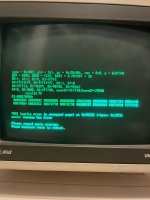Phil's FreeBee emulator is great! I've spent a lot of time with the code and helped fix some bugs and make some enhancements. Definitely worth checking out if you want to play around with an emulated UNIX PC. There are two drive images linked from the github which help get up to speed without having to do a full system install.
FreeBee - AT&T 3B1 / 7300 UNIX PC emulator. Contribute to philpem/freebee development by creating an account on GitHub.

github.com
MGR is very interesting and something I want to explore further. Is this something you used to use on UNIX PC? It requires the VIDPAL hardware mod that allows user writes to VRAM. However, there is a VIDPAL software emulator kernel driver which intercepts the MMU bus errors, and does the user read/writes to VRAM. That way MGR can be run once the vidpal kernel driver is running. It's slower of course but at least can be run. MGR "fix 4" for UNIX PC is pretty easy to find. But there was also a fix 5 which I have yet been able to track down:
The quickest way to try MGR is to use the mgr-demo.tar.gz:


